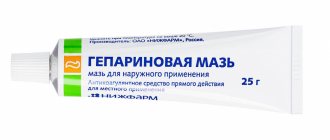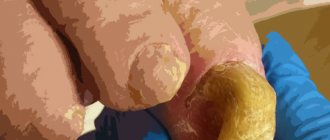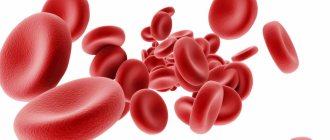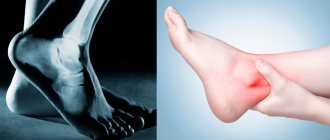The appearance of blue spots, stripes, dots or blue discoloration of the plate is a deviation from the norm. After all, a healthy nail is light pink in color, with a smooth surface. Why do my fingernails turn blue? Some of the reasons you can find out and eliminate yourself; to determine others, you will need medical help, additional examination and treatment. If in doubt, it is better not to delay and immediately contact a podiatrist.
Let's look at the factors that cause blue fingernails or toenails.
Injuries
These include bruises, blows, falling of a heavy object, pinching, squeezing. Why does the plate turn blue when injured? A hematoma or subungual hemorrhage forms under a fingernail or toe that is suddenly subjected to strong mechanical stress. This is what shines through in blue. The hematoma does not appear immediately, but on the second or third day after the blow.
The color of the injured area varies from red, bluish-purple to dark blue or even black, depending on the severity of the injury. Other symptoms include swelling, throbbing, aching or stabbing pain.
It's not just serious nail injuries that cause bluish discoloration. Sometimes it appears after a manicure or pedicure, if an inexperienced master accidentally damaged the matrix area, cuticle, or violated the integrity of the plate.
Domestic or professional injuries are the most common reasons why fingernails or toenails turn blue. If you are sure that there were definitely no injuries, you need to look for other factors that caused the color change.
Diseases
Among the diseases, blue nails cause impaired blood circulation in the extremities, congestion, narrowing of the lumen of small or large vessels and, as a result, a decrease in the supply of oxygen and nutrients. Such vascular pathologies include diabetes mellitus, atherosclerosis, and Raynaud's disease.
In addition to problems with blood vessels, blue nails can be caused by:
- Westphal-Wilson disease. This is a genetic disorder that manifests itself in impaired copper metabolism. There is a blue discoloration of the lunula or white semicircle at the base of the nail;
- Cirrhosis of the liver;
- Respiratory diseases. Among them are bronchial asthma, chronic obstructive pulmonary disease, pneumonia, respiratory distress syndrome;
- Heart disease (congenital defect, chronic heart failure);
- Methemoglobinemia. With this disease, a lot of methemoglobin is present in the blood. This type of hemoglobin does not transport oxygen from the lungs to organs and tissues, which disrupts the transport function of the blood;
- True polycythemia or pathology of the hematopoietic system, in which the number of red blood cells increases.
With the listed internal diseases, in addition to blue nails, there will be other symptoms, which is important to consider when diagnosing:
- When blood circulation is impaired, changes affect not only the nails, but also the skin. They lose sensitivity, acquire a bluish tint, and become cool to the touch;
- Heart disease is accompanied by shortness of breath, pain in the sternum, on the left under the shoulder blade, increased fatigue, instability of blood pressure;
- In case of respiratory diseases, there is a cough, discomfort or chest pain;
- If there are problems with the liver, there is pain in the right hypochondrium, loss of appetite, nausea, yellowing of the skin, and stool disorders.
Accompanying symptoms
Blue discoloration of the nail plate may be accompanied by the following symptoms:
- A form of cardiovascular failure. In this case, accumulation and stagnation of blood occurs in the lower extremities. The situation is very dangerous and requires special attention and urgent contact with a specialist.
- Aching pain in the nail area can be caused by mechanical damage received by a person due to improperly selected shoes, playing sports, or due to a strong blow. In these situations, the vessels begin to burst and a hematoma forms. Most often, the little finger and thumb are at risk of injury, due to their location.
- Pathological infection of the nail plate by a fungus, which can occur with low immunity.
- Damage during removal of hangnails, resulting in infection, unpleasant odor, and itching.
- Some forms of lung cancer.
- Toxic poisoning of the body, including poisoning with drugs and household chemicals that the liver could not cope with (hemochromatosis).
- Diseases of the respiratory system, asthma and bronchitis, can, in the acute phase, lead to oxygen starvation and a blue color of the plates.
Infections
Blue nails are observed with some bacterial and fungal infections.
One of them is pseudomony. This is what is called nail damage with Pseudomonas aeruginosa or green mold. The color is not pure blue, but heterogeneous, blue-green. Infection occurs during manicure or violation of the technique of applying artificial coatings. The infection develops in the space between the natural nail and the artificial material, where there is no oxygen, it is humid and there is a source of nutrition (natural nail cells). Pseudomonia occurs in people who are constantly in contact with water, detergents, and soil.
In the case of a fungal infection, a blue, or rather dark blue, color is observed, as a rule, only in an advanced stage, when most of the nail or even several neighboring nails are affected.
Other reasons
If you spend a long time outside without gloves or in insufficiently warm shoes in cold weather, blue nails cause hypothermia of the feet and palms. Moreover, along with the nails, the lips also turn blue. Why is this happening? In the cold, the vessels supplying the nail plates sharply narrow, blood flow slows down, and a characteristic bluish tint appears. This is a normal reaction of the body: by “saving” on the fingers, it maintains the desired temperature in the internal organs. After a massage or warming up in a warm bath, your nails will return to their healthy pink color. The main thing is not to stay in the cold for too long. As soon as you notice blueness, look for a warm place.
Why do pregnant women's nails turn blue? The reason is that against the background of hormonal changes and decreased immunity, melanin dyschromia or a disruption in the production of melanin pigment sometimes develops. An increase in melanin content in the upper layers of the skin turns the nail bed gray or blue. This condition is temporary and not scary, but requires consultation with a doctor.
The nail plate also acquires blue shades due to the dyes contained in dark varnishes. If you like bright blue or dark blue manicure, this could be the reason for your blue nails. Especially if the varnish is of poor quality and its coloring components penetrate deeply into the plate.
Outcome of the problem in the absence of treatment
If the nail plate is left untreated, its recovery can take a long time and lead to serious problems. Lack of treatment can lead to serious consequences, such as:
- nail deformation;
- limitation of motor function;
- swelling;
- the presence of purulent discharge;
- specific smell;
- shooting and aching pain.
If the pathology provokes the appearance of a fungus, self-medication is contraindicated; in this case, only a specialist can help.
The doctor must prescribe the necessary procedures, medications and wellness manicure. In order to speed up the healing process of the nail, it is necessary to include in the diet foods that contain large amounts of calcium, and periodically take baths with salt. These procedures will help normalize the pressure in the area of the diseased area, and the blood will gradually begin to flow out of the nail plate.
Why do my fingernails or toenails turn blue?
Which of the reasons are typical for blue nails on the fingers or toes?
Injuries to the tips of the fingers occur at home or at work, due to an unsuccessful manicure. And also when playing sports, such as playing baseball. On the feet, the nails of the big toe and little finger suffer from injuries, as they are located at the edges.
Why do the nails on my big toes turn blue? Often it's a matter of tight or narrow shoes. The big toe bears the brunt of the body weight combined with the pressure from the inner wall of the shoe. Sports shoes also cause blue nails. This problem occurs among runners and football players. Due to increased load and pressure, a hematoma forms under the nail.
Another common cause of blue toenails is an advanced fungal infection. Diabetes mellitus and atherosclerosis also more often affect the vessels on the toes rather than on the hands.
Diagnostics
The reason for the change in the color of the nail plate on the hands cannot always be determined independently. To confirm the diagnosis and prescribe treatment, an examination is required. To more accurately establish the pathology, it is necessary to know exactly how long ago the blue discoloration appeared on the nails.
To diagnose the disease, a specialist prescribes the following procedures:
- Visual inspection and collection of information:
- chronic diseases are identified;
- it is specified when the blueness of the nail occurred;
- the presence of additional symptoms is determined;
- predisposition to diabetes and cancer is clarified;
- The condition of the nail plate is assessed.
- Taking urine and blood tests. Based on the data obtained, the general condition of the patient is determined, diabetes and the presence of infection in the body are excluded or confirmed.
- Taking a scraping from the nail plate. It is necessary when a fungal infection is suspected to determine the type of pathogen.
- Biopsy to rule out/confirm the presence of cancer cells.
- Wood's lamp glow. It also helps identify fungal infections.
- ECG to detect cardiac dysfunction.
- X-ray to detect pathologies in the lungs.
If there is insufficient data from the above examinations, an MRI may be prescribed.
Why do my child's nails turn blue?
In children, as in adults, blue nails are caused by injuries. For safe reasons, such pigmentation occurs after contact with coloring substances: paints, gouache, felt-tip pens, dyes that are used in creativity.
For children, the cause of blue nails is high temperature. Why do nails turn blue during fever? A sharp spasm of blood vessels disrupts heat exchange, the baby’s hands become cold to the touch, and the nails turn blue. To improve blood circulation, you need to intensively rub the baby's arms and legs. Give a warm drink, an antipyretic with an antispasmodic in a dosage and dosage form appropriate for the age.
In the first months of life, infants often have blue fingernails from the base to the middle. Why is this happening? Even though it looks scary for mommies, it's not a big deal. These are the features of the physiology, structure of nails and skin in infants. Thermoregulation has not yet been adjusted; the body is adapting to new conditions. Nails and skin are very thin; blood vessels can be seen through them. This “pattern” of nails is especially noticeable when the baby is squeezing an object with his hands or is a little cold. This goes away by the age of 2 months.
What to do if your nails turn blue?
If you don't know the reasons, it's best to see a doctor. The doctor will conduct a survey, examination, prescribe tests, and treatment. He will tell you what to do so that the situation does not repeat itself and does not cause complications.
How to treat injuries?
Minor injuries can be easily dealt with at home. First of all, you need to apply cold for 5 - 10 minutes to reduce pain and reduce hematoma. Ice, frozen foods, and a stream of cold water are used as cold. After providing such first aid, the injury site is treated with an antiseptic and, if necessary, the finger is bandaged. If the nail is very painful, take a painkiller. For speedy healing and resorption of hematomas, special ointments against bruises are used. In the future, the condition of the nail is monitored. They wait until the injured part grows back to cut it off.
If the injury is serious, the integrity of the plate is damaged, there is bleeding, you need to go to the doctor. With such an injury, there is a high risk of bacterial complications, accumulation of pus, and acute pain. To prevent this, the doctor will remove debris from the wound, thoroughly treat it with an antiseptic, and prescribe an antibacterial ointment. Sometimes the doctor pierces a small hole in the nail to release blood accumulated in the subungual space and relieve pressure and bursting pain. The puncture is done only if there is a risk that the plate will rise and separate from the nail bed. To reduce the likelihood of rejection, apply a tight bandage.
The healing period for injuries is long, taking from several weeks to months. If your toenail is injured, try to wear comfortable, closed shoes with a round toe during this time to avoid squeezing the injured area. For the first 2–3 days, it is recommended to stay at home and wear nothing.
What to do in case of internal diseases?
If there is poor circulation in the extremities due to diabetes mellitus or other vascular problems, the course of the underlying disease is treated and monitored, because changes in the nails are secondary. No procedure will have an effect if the provoking factor is not eliminated. If there are problems with blood circulation, there is a danger that the darkened tissues are already dead areas that must be removed to prevent infection of neighboring healthy tissues.
To find out what disease caused the changes in the nail plate, you will need to take tests and consult with the following specialists:
- cardiologist;
- endocrinologist;
- gastroenterologist;
- vascular surgeon.
How to fight infections?
If the cause of darkening of the plate is a bacterial or fungal infection, treatment begins with identifying the type of pathogen. Then local agents or a combination of local and systemic drugs are prescribed to destroy the pathogen. For a bacterial infection, treatment lasts 1–2 weeks, for a fungal infection – several months.
A bacterial infection is more dangerous than a fungal infection. It is characterized by an acute course and rapid spread. If you suspect a bacterial infection of the nail apparatus, you should consult a doctor as soon as possible, since the pathogen can enter the blood through the nail bed and cause infection of the body.
When is a doctor needed?
Be sure to consult a doctor if:
- a blue tint is present not only under the nails, but also around them, spreading to all the tips of the fingers;
- the blue area causes intense pain;
- there is itching, redness, peeling of the skin around the nails;
- there is dizziness, weakness, headache, lack of appetite;
- shortness of breath bothers you even after minor physical exertion;
- the body is predisposed to pulmonary or heart failure, vascular pathologies;
- The blue color lasts for a long time.
Call your doctor or nurse if you have:
- temperature rises to 100.4°F (38°C) or higher;
- chills.
- worsening of any symptoms;
- have any of the following symptoms around or under the nail: hot, hard, or painful skin;
- bright yellow or green discharge;
- bleeding;
- unpleasant odor;
- increasing redness or swelling;
- increasing pain or discomfort;
- redness;
to come back to the beginning
How to prevent blue nails?
Many problems can be easily avoided by following preventive measures. And blue nails are no exception. What can you do to keep your fingernails and toenails healthy, retain their natural color, and not break, crumble, or peel?
- Use individual tools for manicure or pedicure, wipe them with an antiseptic before the procedure;
- Trim your nails correctly: on the feet - at a right angle, on the hands - with a rounded edge;
- Choose comfortable shoes made from natural, breathable materials. Make sure that the big toe does not rest against the toe of the shoe and that the nail on it does not bend. In summer, to minimize the risk of accidental injury, wear closed-toe shoes;
- Keep your feet clean, dry, warm;
- In cold weather, wear gloves and warm, spacious shoes to prevent your hands or feet from freezing;
- Be careful when working with heavy objects, cutting tools, drawers, doors;
- When contacting household chemicals, use protective gloves;
- To prevent and early detect nail diseases, get a medical manicure and pedicure every six months;
- Choose high-quality decorative varnishes, nail care products, and hand skin care products.
Treat your nails carefully, care for and protect them, check their condition with a podiatrist. As we found out, some causes of blue nails are not dangerous and the problem goes away on its own. And in some cases, you cannot do without medical help. To avoid complications, it is important to use it in time.
0 0
Prevention measures
To prevent the appearance of a blue tint on the nail plate, it is recommended to pay daily attention to caring for it and preventing aggressive exposure to external factors.
All rules prescribed by doctors are based on the reasons why darkening may reappear, so they are also prescribed for the entire period of treatment.
There are several recommendations for prevention:
- Do your manicure properly. To process nails, it is recommended to use a file instead of sterile nail scissors, moving it in one direction. The cuticle must first be pushed back with a pusher and then cut off with nippers. The free edge should not be cut close to the skin;
- Maintain personal hygiene, change your socks once a day;
- Wear spacious, comfortable shoes in which the toes do not rest against each other, but are in a natural state;
- Always wear personal footwear, even in saunas or water parks, to prevent fungal infections;
- When using chemical compounds, protect the surface of your hands with thick rubber gloves to prevent exposure to aggressive components;
- If there is mechanical damage to your fingers or hands, begin treatment immediately to prevent complications;
- In winter, do not neglect to wear warm gloves, mittens, and socks to prevent hypothermia of the sensitive area, which can lead to frostbite.
Also keep in mind that hands and feet should always be dry, since a humid environment promotes the growth of pathogenic bacteria, which quickly spread to the girl’s fingers.
And if you are getting a manicure in a salon, first make sure that sterile consumables and products are used, and that the master properly processes the free edge of the nail.










